Abstract
The diagnostic yield of different electrophysiological criteria was examined to establish whether a peroneal palsy was due to compression of the nerve in the region of the capitulum fibulae. Slowing of sensory conduction along the segment of the nerve across the capitulum fibulae localized the lesion in 64% of 47 consecutive patients with a history indicating or suggesting compression of the nerve in the vicinity of the capitulum fibulae and there were no false positive findings in 18 patients whose peroneal palsy was not due to compression at the capitulum fibulae. In 20% of the patients with slowing along the segment across the capitulum, conduction velocity was normal when measured from the superior retinaculum to the popliteal fossa. Slowing along motor fibres (m. extensor digitorum brevis) localized the site of the lesion in one-third of the patients. Differences in amplitude and in split-up of the sensory responses recorded in the popliteal fossa as compared with those recorded distal to the capitulum fibulae were of limited diagnostic value because of many false positive findings among patients whose peroneal palsy was not due to compression of the nerve at the capitulum fibulae.
Full text
PDF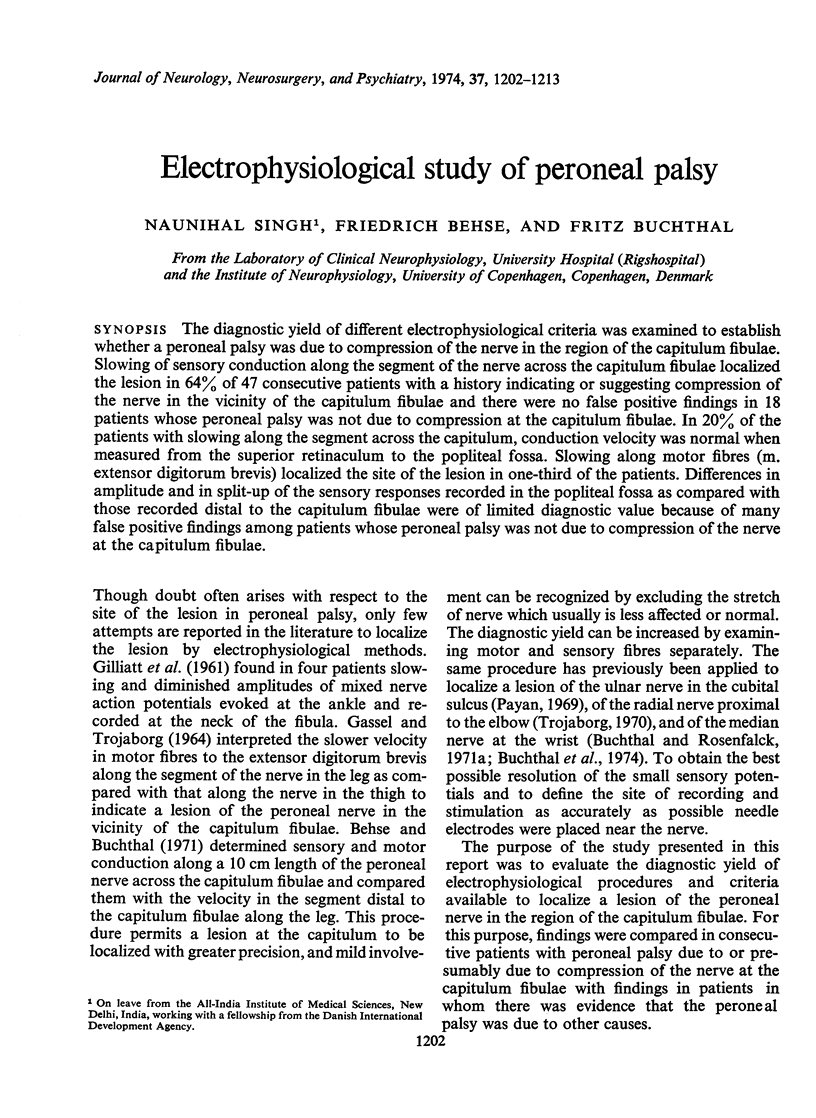
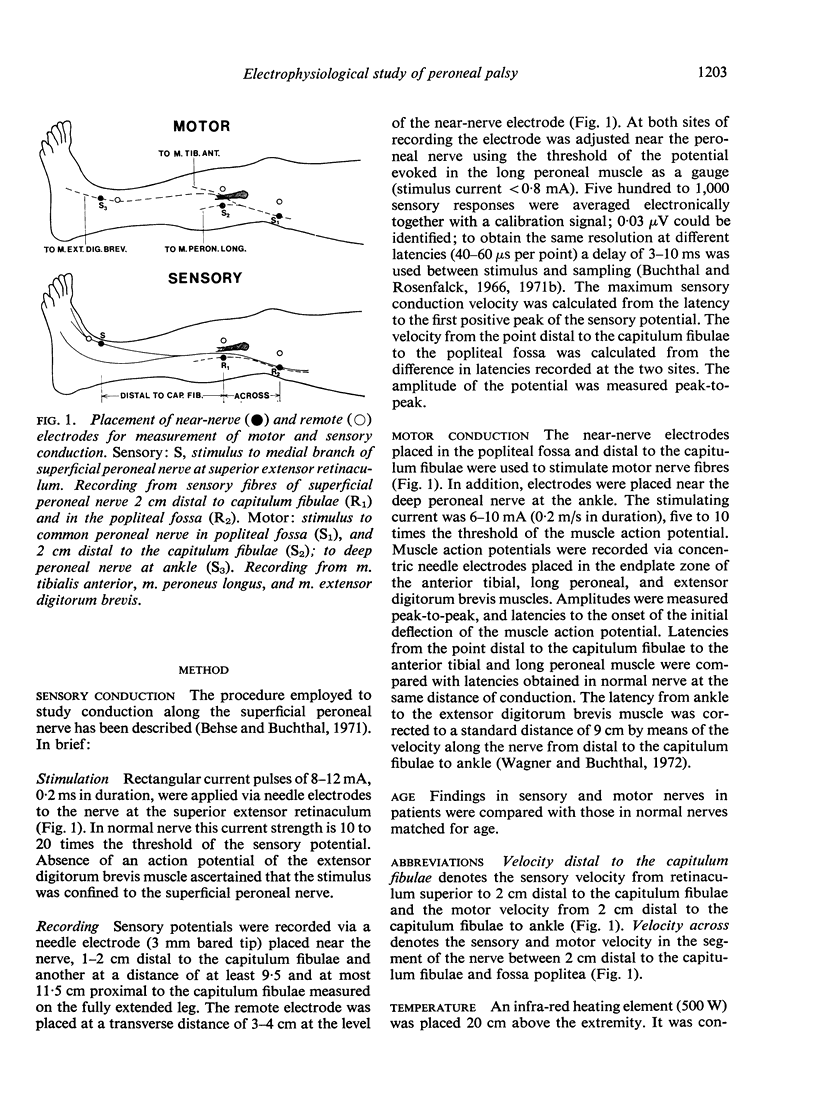
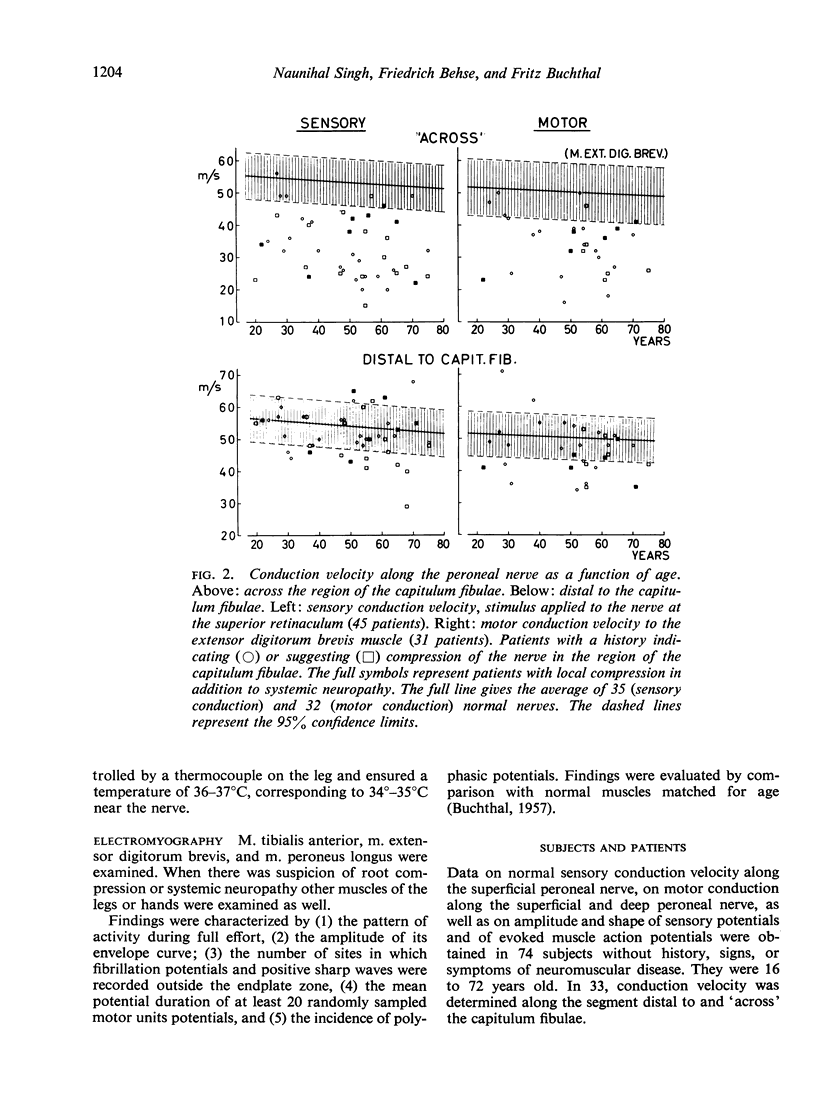
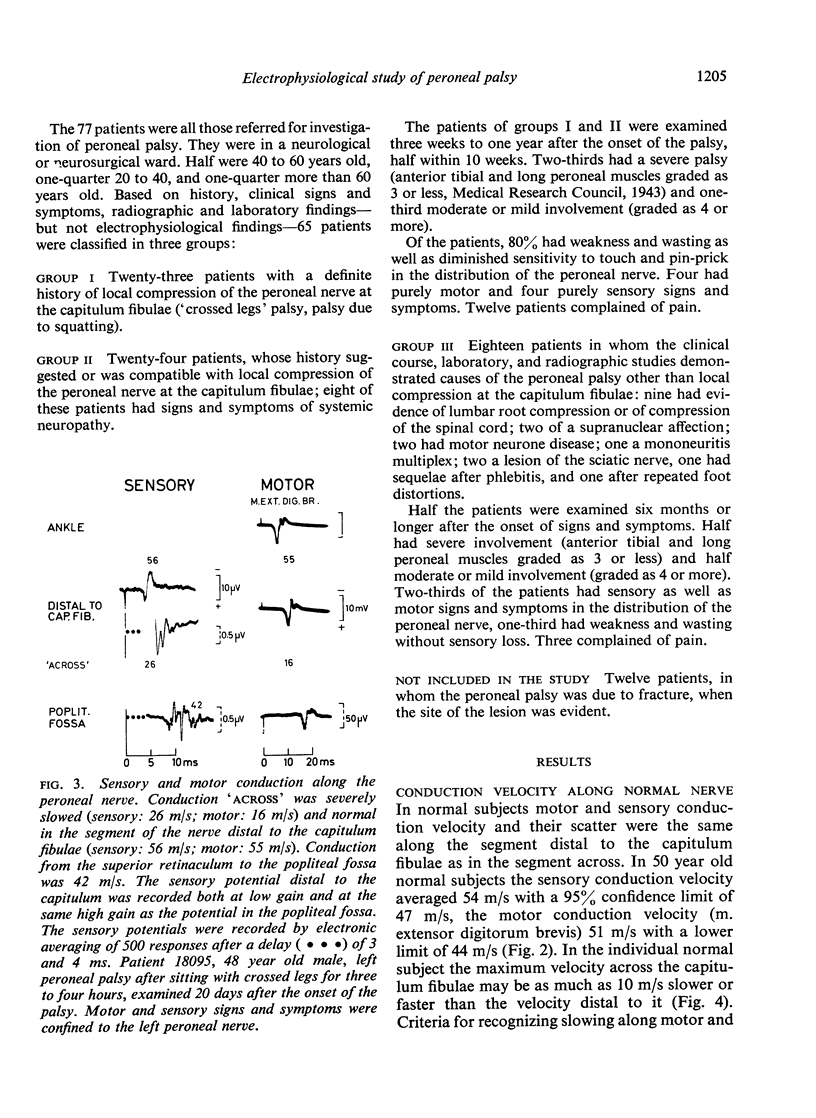
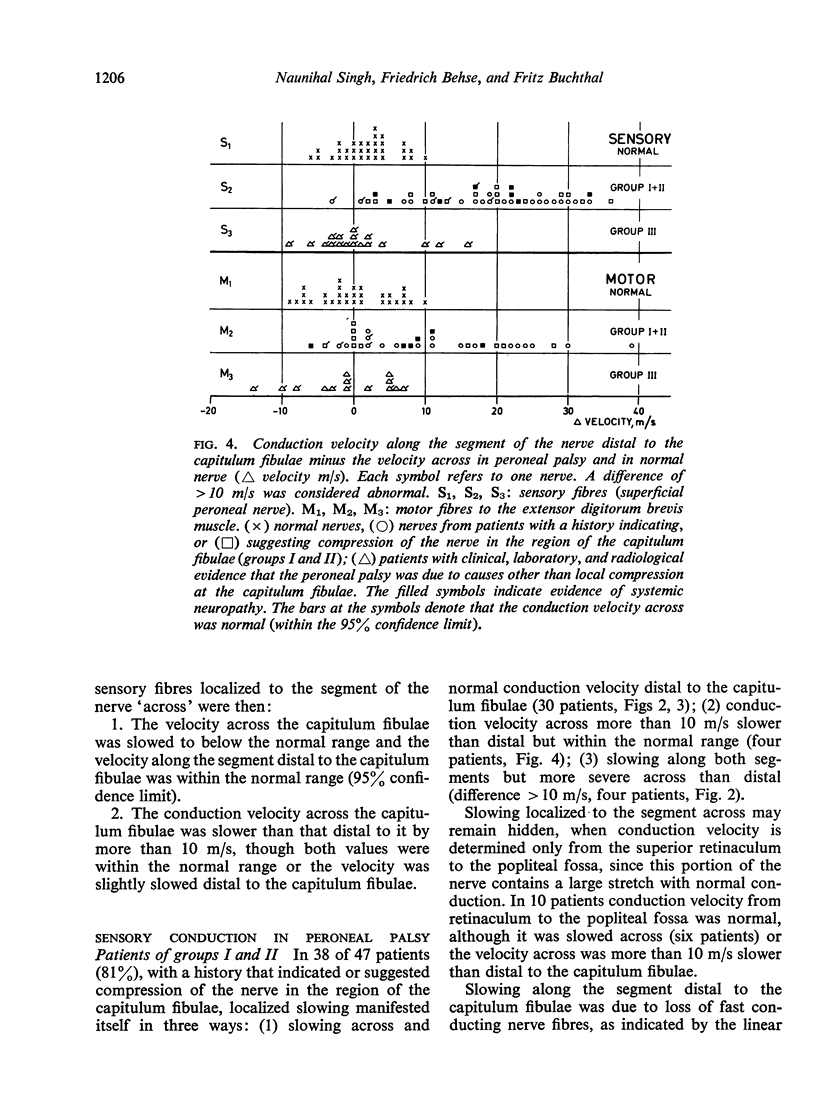
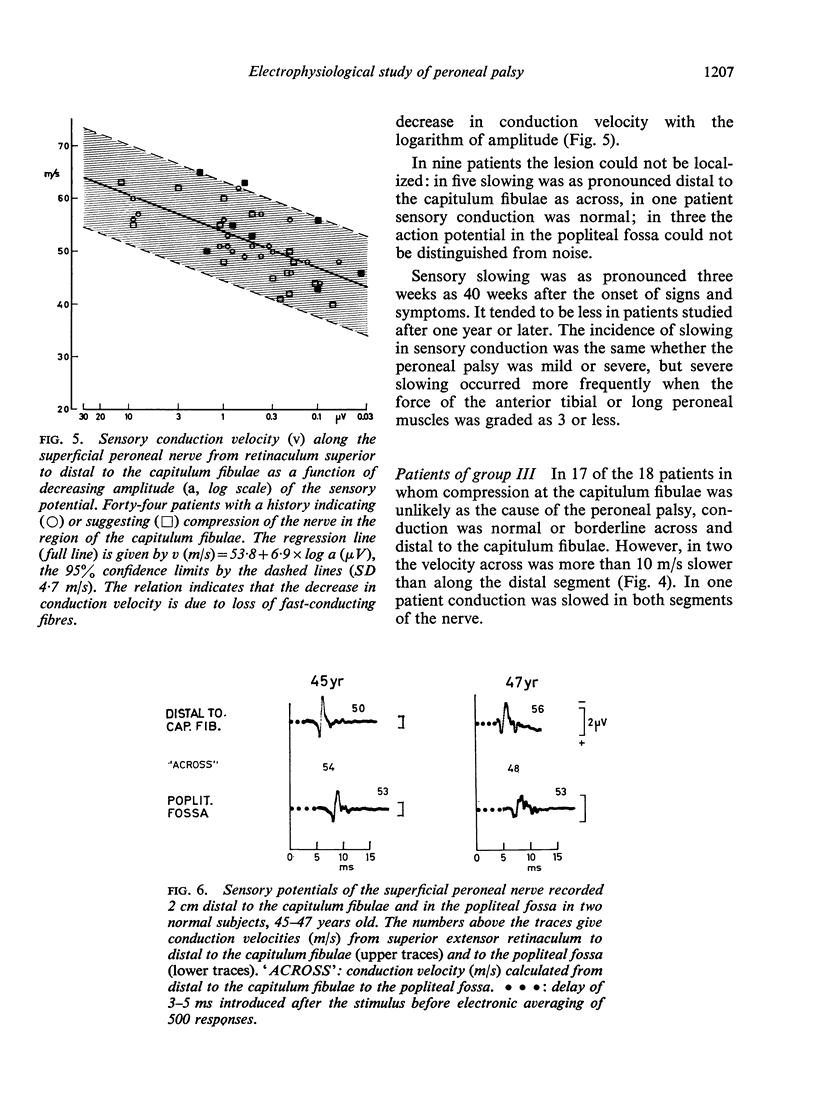
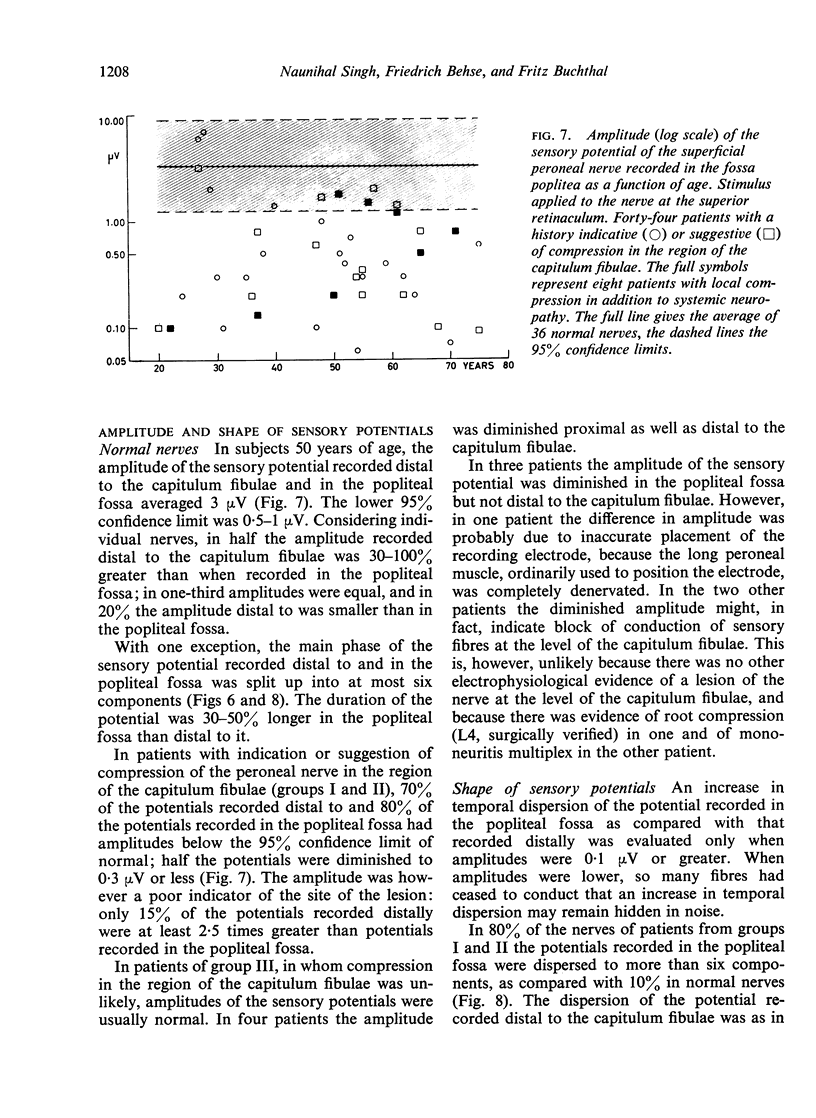
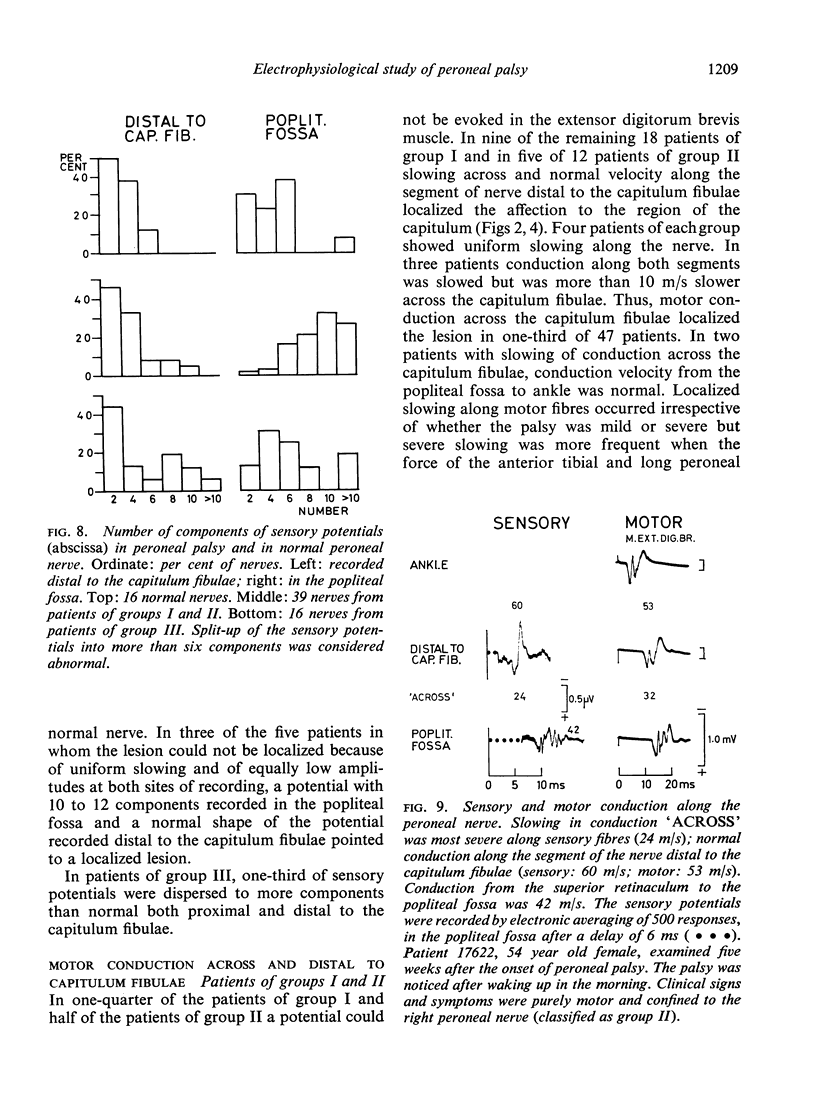
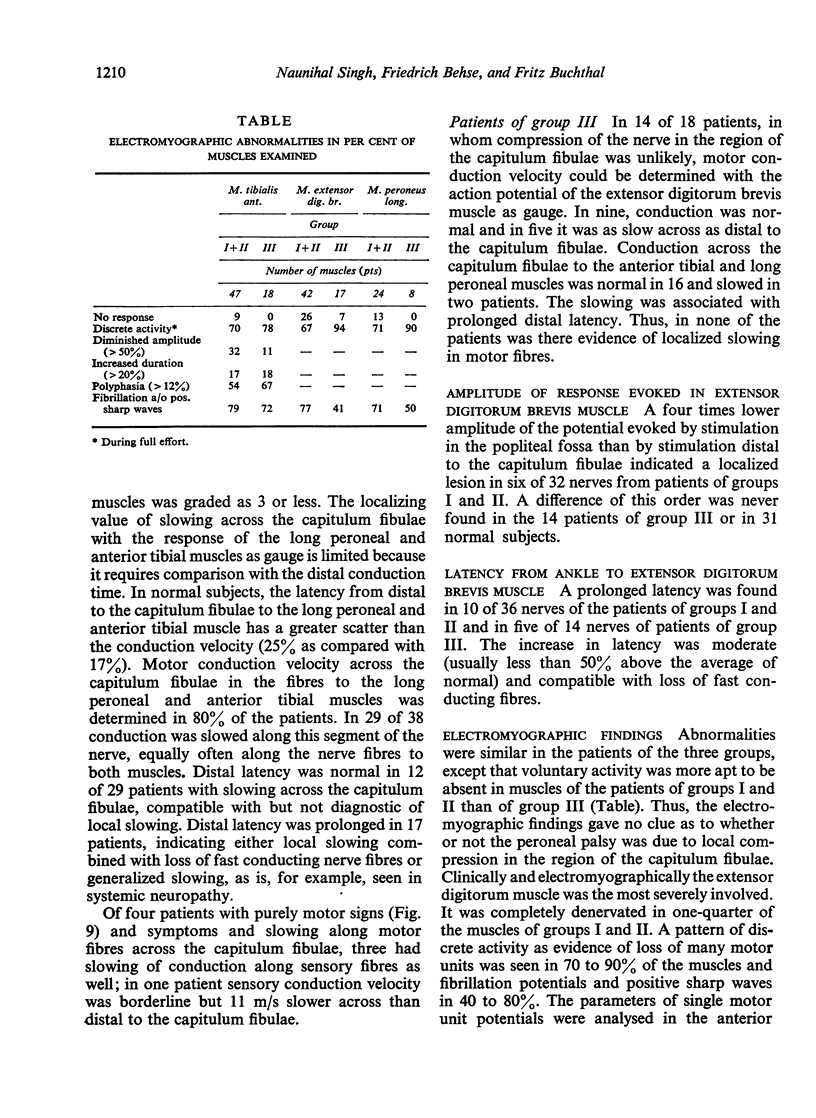
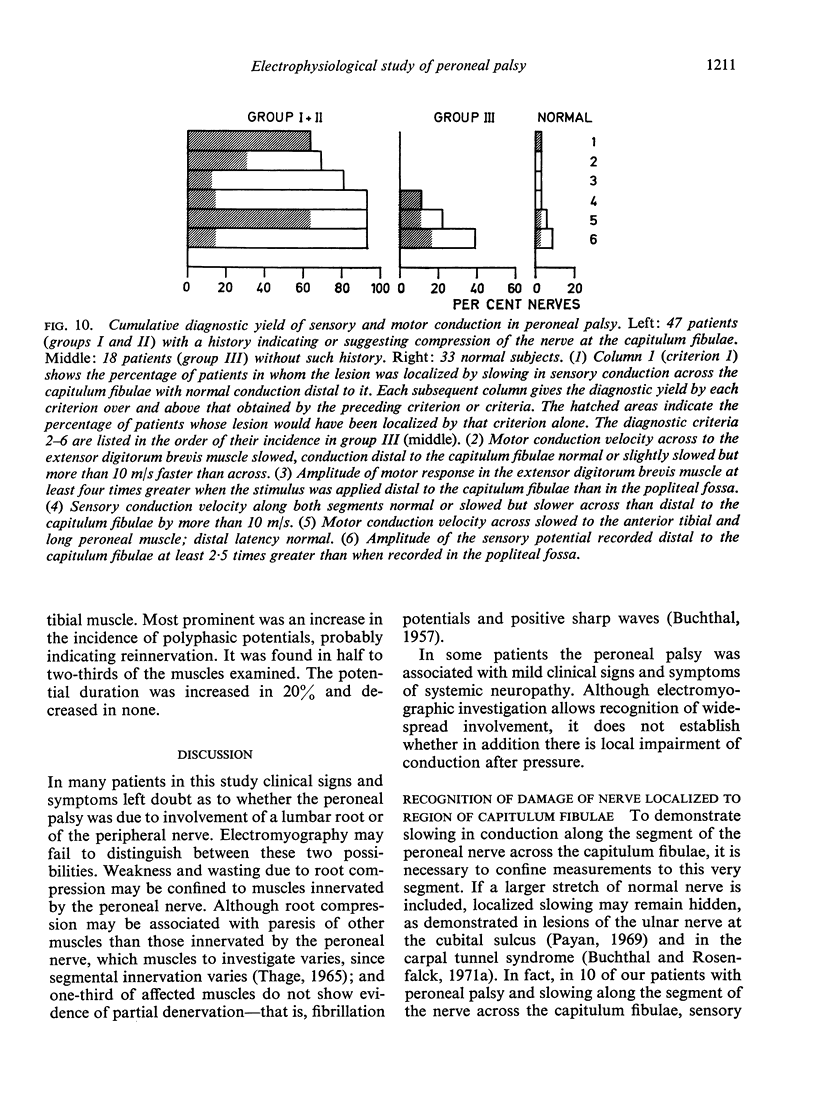
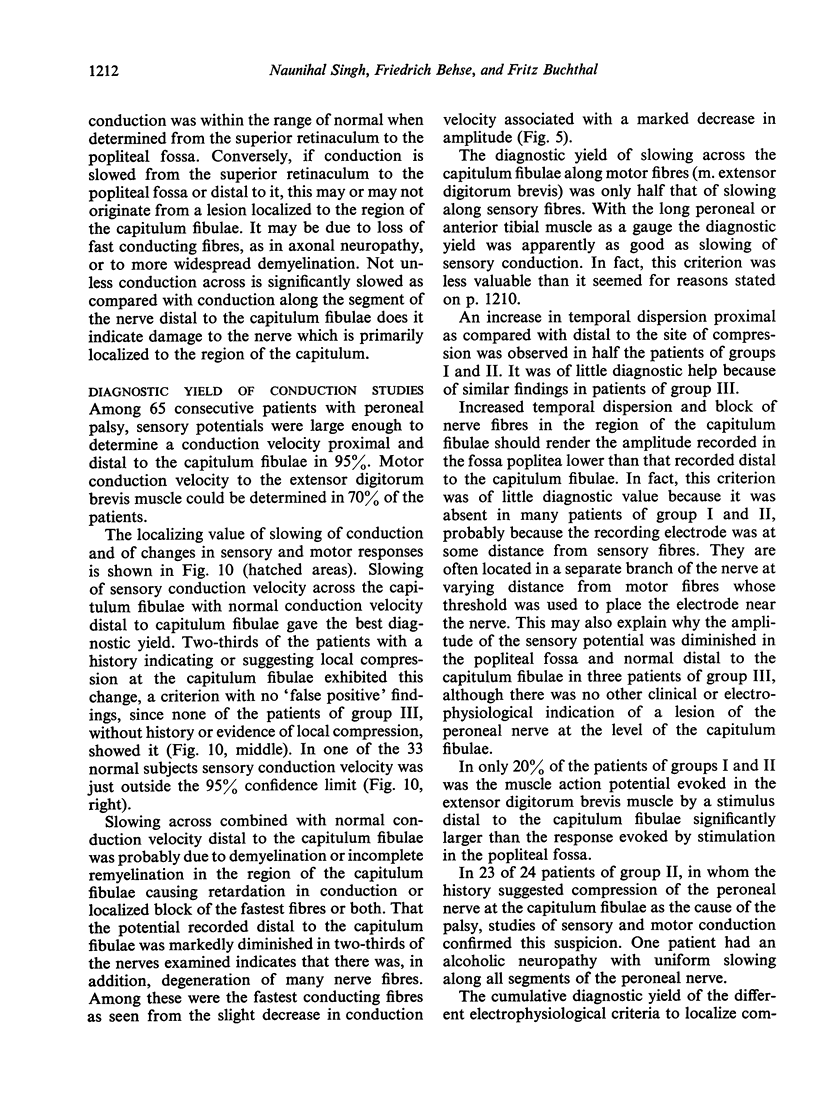
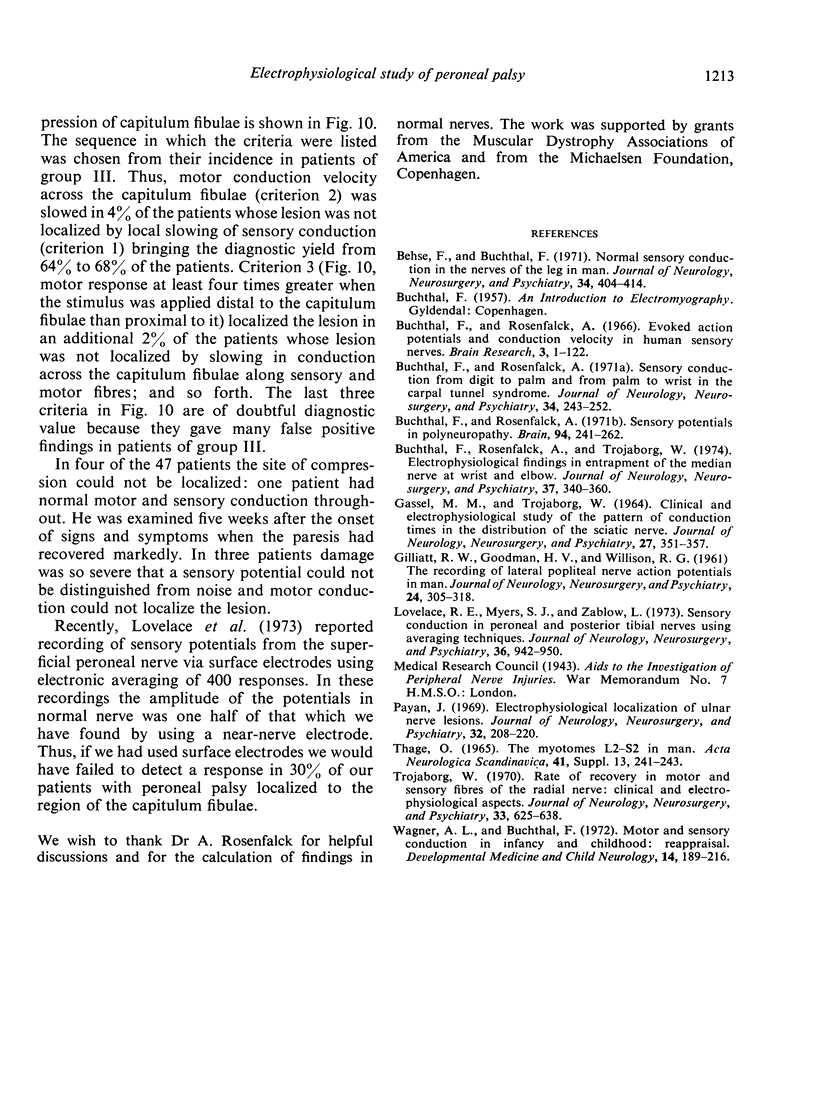
Selected References
These references are in PubMed. This may not be the complete list of references from this article.
- Behse F., Buchthal F. Normal sensory conduction in the nerves of the leg in man. J Neurol Neurosurg Psychiatry. 1971 Aug;34(4):404–414. doi: 10.1136/jnnp.34.4.404. [DOI] [PMC free article] [PubMed] [Google Scholar]
- Buchthal F., Rosenfalck A. Sensory conduction from digit to palm and from palm to wrist in the carpal tunnel syndrome. J Neurol Neurosurg Psychiatry. 1971 Jun;34(3):243–252. doi: 10.1136/jnnp.34.3.243. [DOI] [PMC free article] [PubMed] [Google Scholar]
- Buchthal F., Rosenfalck A. Sensory potentials in polyneuropathy. Brain. 1971;94(2):241–262. doi: 10.1093/brain/94.2.241. [DOI] [PubMed] [Google Scholar]
- Buchthal F., Rosenfalck A., Trojaborg W. Electrophysiological findings in entrapment of the median nerve at wrist and elbow. J Neurol Neurosurg Psychiatry. 1974 Mar;37(3):340–360. doi: 10.1136/jnnp.37.3.340. [DOI] [PMC free article] [PubMed] [Google Scholar]
- GASSEL M. M., TROJABORG W. CLINICAL AND ELECTROPHYSIOLOGICAL STUDY OF THE PATTERN OF CONDUCTION TIMES IN THE DISTRIBUTION OF THE SCIATIC NERVE. J Neurol Neurosurg Psychiatry. 1964 Aug;27:351–357. doi: 10.1136/jnnp.27.4.351. [DOI] [PMC free article] [PubMed] [Google Scholar]
- Lovelace R. E., Myers S. J., Zablow L. Sensory conduction in peroneal and posterior tibial nerves using averaging techniques. J Neurol Neurosurg Psychiatry. 1973 Dec;36(6):942–950. doi: 10.1136/jnnp.36.6.942. [DOI] [PMC free article] [PubMed] [Google Scholar]
- Payan J. Electrophysiological localization of ulnar nerve lesions. J Neurol Neurosurg Psychiatry. 1969 Jun;32(3):208–220. doi: 10.1136/jnnp.32.3.208. [DOI] [PMC free article] [PubMed] [Google Scholar]
- Thage O. The myotomes L2--S2 in man. Acta Neurol Scand Suppl. 1965;13(Pt 1):241–243. doi: 10.1111/j.1600-0404.1965.tb01878.x. [DOI] [PubMed] [Google Scholar]
- Trojaborg W. Rate of recovery in motor and sensory fibres of the radial nerve: clinical and electrophysiological aspects. J Neurol Neurosurg Psychiatry. 1970 Oct;33(5):625–638. doi: 10.1136/jnnp.33.5.625. [DOI] [PMC free article] [PubMed] [Google Scholar]
- Wagner A. L., Buchthal F. Motor and sensory conduction in infancy and childhood: reappraisal. Dev Med Child Neurol. 1972 Apr;14(2):189–216. doi: 10.1111/j.1469-8749.1972.tb02576.x. [DOI] [PubMed] [Google Scholar]


